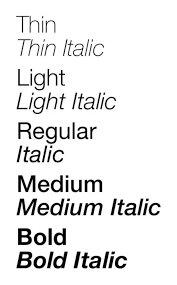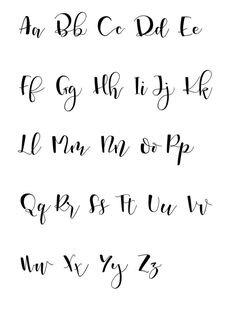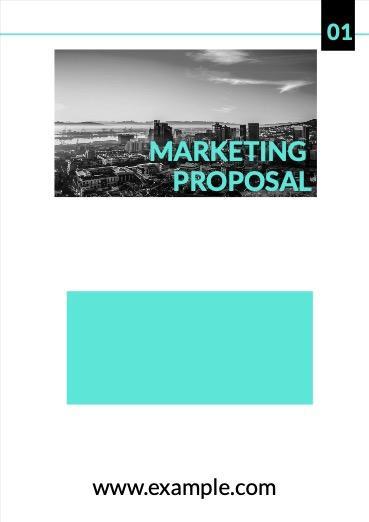Exploring the Influence of Futuristic Fonts
Futuristic fonts are gaining popularity across design, marketing, and branding thanks to their unique and contemporary styles that emanate a sense of technological advancement. These fonts are particularly fitting for space, techno, and sci-fi-themed projects, as well as websites, posters, logos, and branding endeavours. Often found in sans-serif, these fonts feature unconventional letterforms that challenge traditional expectations. Available in both free and premium versions, they are becoming a staple among designers, with notable choices like Varino, Futuristic Caligraph, and Avenir.
Futuristic fonts have a remarkable impact on audiences and the impressions they form. These fonts influence viewers in various ways:
They communicate a sense of cutting-edge technology and superiority, immersing audiences in a modern experience. Particularly suited for space, techno, and sci-fi themes, these fonts create immersive environments that transport audiences to futuristic realms. Their innovative and contemporary design challenges conventional font norms, projecting authenticity and modernity. Designers can leverage these fonts to evoke specific emotions, enhancing the purpose and distinct messaging of their websites. The choice of font significantly shapes a project's overall impression, making futuristic fonts an excellent option for contemporary and cutting-edge designs. The rising popularity of futuristic fonts in design, marketing, and branding is attributed to their ability to convey technological advancement and superiority. Their distinctive and modern design sets the tone for these qualities, contributing to their widespread appeal.
The Evolution of Futuristic Fonts:
Futuristic fonts have evolved over time, finding their origins in science fiction and futuristic media. During the 1950s and 1960s, sci-fi movies and TV shows adopted stylized fonts to create a futuristic ambience. These fonts featured distinctive sans-serif styles and letterforms that challenged conventional norms. As technology progressed, so did the design of futuristic fonts. Today, these fonts draw inspiration from modern technology, sci-fi films, and technological gadgets. Futuristic fonts find their ideal fit in cutting-edge, paranormal, space, techno, and sci-fi-themed designs, seamlessly blending into various applications such as websites, posters, logos, and branding visuals.
Designers leverage new visual elements and aesthetics as technology advances, creating sleek and minimalist designs that mirror the clean lines and futuristic vibes of modern tech. Advanced digital design tools empower designers to craft intricate futuristic fonts with enhanced control, pushing the boundaries of typography. The internet and digital marketplaces have democratized access to these fonts, offering both free and premium options for easy integration into projects. Shifting design trends and the consistent search for fresh ways to captivate audiences have led to the incorporation of bold letters, curved lines, and distinct letterforms in futuristic fonts, evident in their prevalence within space, techno, and sci-fi-themed designs.

Table of contents:
- ● Exploring the Influence of Futuristic Fonts
- ● The Evolution of Futuristic Fonts:
- ● The Characteristics of Futuristic Fonts:
- ● Psychological Impact of Futuristic Fonts:
- ● Futuristic Fonts in Branding and Marketing
- ● Futuristic Fonts in Digital Design
- ● The Cultural Impact of Futuristic Fonts
- ● Pairing Futuristic Fonts with Other Design Elements
- ● The Limitations and Challenges of Futuristic Fonts
- ● Conclusion: Embracing Futuristic Fonts for Innovative Design
The Characteristics of Futuristic Fonts:
Futuristic fonts boast distinctive design elements that convey modernity and innovation. Let us explore these features:
- Clean Lines: Futuristic fonts exhibit sleek and sharp lines, granting them a minimalist, contemporary appearance.
- Geometric Influences: These fonts exude a sleek and modern vibe by incorporating shapes like squares, circles, and triangles.
- Unique Letterforms: Characterised by atypical letter designs, these fonts challenge conventional expectations. Thick letters, double-line strokes, and rounded curves form captivating and visually engaging compositions.
- Minimalism: Futuristic fonts, mostly sans-serif, mirror the clean, modern aesthetics of technology, rendering them suitable for various applications.
- Unconventional Traits: Renowned for their distinctiveness, futuristic fonts stand out from conventional typefaces. They are ideal for conveying novelty and modernity.
The defining attributes of futuristic fonts, including clean lines, geometric influences, unique letterforms, and minimalist designs, evoke modernity and futurism across a spectrum of uses:
- Clean lines and geometric elements infuse minimalist and modern aesthetics, ideally suited for cutting-edge designs, space themes, techno styles, and sci-fi projects.
- Unique letterforms disrupt conventions and amplify authenticity, making these fonts apt for branding, logos, and conveying distinctive messages.
- With their sleek, sans-serif, and minimalist design, futuristic fonts align with the contemporary feel of modern technology, which makes them an excellent fit for websites, posters, and modern graphic projects.
- Ideal for immersive experiences, these fonts shine in space, techno, and sci-fi themes, enveloping audiences in futuristic dimensions.
- The tech-forward aura of futuristic fonts imparts a sense of advancement and modernity, making them fitting for technology, gaming, and fashion contexts.

Psychological Impact of Futuristic Fonts:
Typography significantly impacts human psychology and emotions, and futuristic fonts are no exception. The psychological aspects of typography and how futuristic fonts influence emotions and perceptions are as follows:
- Font Psychology: This entails studying how font styles impact human behaviour and emotions. Different fonts exert astonishing effects, altering taste, inducing trustworthiness, friendliness, or aspiration.
- Emotional Response: Fonts evoking psychological reactions enhance brand identity's trustworthiness, friendliness, or aspiration. For instance, futuristic fonts can elicit a sense of technological advancement, immersing audiences in modernity.
- Perception: Font choices influence feelings, thoughts, and behaviour. Futuristic fonts immerse audiences in futuristic worlds and convey modernity, fitting for innovative designs, sci-fi themes, and techno projects.
- Information Retention: Typography influences emotions, behaviour, information retention, and memory. Futuristic fonts enhance design memorability, captivate attention, and enhance visual storytelling.
Furthermore, futuristic fonts establish advanced and innovative connections with content through various means:
- Geometric Shapes: With squares, circles, and triangles, these fonts achieve a sleek, modern look, fostering futuristic associations.
- Unique Letterforms: Featuring distinct forms, futuristic fonts stand out. They employ thick letters, double-line strokes, and rounded curves, crafting captivating designs and futuristic bonds.
- Colours and Textures: Diverse colour and texture options in futuristic fonts cater to project needs, cementing ultramodern and innovative connections.
- Emotional Impact: These fonts forge emotional links by indicating technological advancement and modernity.
- Design Perception: Ideal for cutting-edge designs, they symbolise modernity and innovation, cultivating futuristic ties with content.

Futuristic Fonts in Branding and Marketing
Futuristic fonts are widely used in branding and marketing campaigns to create a modern and innovative visual identity. Let us see how they are utilised:
- Uniqueness: Futuristic fonts stand out and grab attention, helping brands differentiate themselves from competitors. They offer a distinct and memorable visual representation that aligns with a brand's forward-thinking and cutting-edge image.
- Technological association: Futuristic fonts evoke a sense of technological advancement and superiority, making them suitable for brands in the tech industry or those aiming to convey a modern and innovative image. These fonts help establish a connection between the brand and the concept of progress and innovation.
- Visual storytelling: Futuristic fonts contribute to the overall visual storytelling of a brand or marketing campaign. They can enhance the message being communicated and create a futuristic atmosphere that resonates with the target audience.
- Brand personality: The choice of a futuristic font can reflect a brand's personality and values. It can convey a sense of being forward-thinking, dynamic, and trailblazing, which is particularly relevant for brands targeting younger and tech-savvy audiences.
- Versatility: Futuristic fonts can be used across various marketing materials, including logos, headlines, posters, websites, and social media graphics. Their versatility allows consistent branding and a cohesive visual experience across different touchpoints.
Several successful brands have effectively utilised futuristic fonts to convey their forward-thinking image. Here are some examples:
- Tesla: This electric vehicle manufacturer uses a sleek and modern futuristic font in its branding. The font choice reflects the brand's innovative and cutting-edge approach to sustainable transportation.
- Nike: This global sportswear brand has incorporated futuristic fonts in various marketing campaigns. The fonts convey a sense of speed, energy, and technological advancement, aligning with Nike's commitment to pushing boundaries and empowering athletes.
- Apple: This technology giant is known for its minimalist and modern design aesthetic. The use of futuristic fonts in Apple's branding and product interfaces reinforces the brand's association with innovation, simplicity, and cutting-edge technology.
- SpaceX: This aerospace manufacturer and space transportation company utilises futuristic fonts in its branding. The fonts evoke a sense of space exploration, technological advancement, and the future of space travel.
- Adidas: This sportswear brand has incorporated futuristic fonts in its marketing campaigns to convey a sense of modernity and innovation. The fonts align with Adidas' commitment to performance, style, and overcoming limitations in the athletic industry.
These brands effectively utilise futuristic fonts to create a visual identity that reflects their forward-thinking and innovative nature. The fonts contribute to the overall brand perception and help establish a connection with the audience, reinforcing the brands' association with modernity, technology, and progress.

Futuristic Fonts in Digital Design
Futuristic fonts are essential elements in web design, app interfaces, and user experience (UX), playing significant roles including:
- Visual Appeal: These fonts enhance visual interest, creating a modern design that resonates with users.
- Brand Identity: Futuristic fonts contribute to brand identity, connecting with audiences through a sense of technological advancement.
- Enhanced UX: They create immersive designs that capture attention, particularly suitable for cutting-edge projects.
- Information Hierarchy: Futuristic fonts facilitate content navigation and emphasise key data, aiding user understanding.
- Emotional Impact: These fonts evoke feelings tied to advancement, forging a positive user-content connection.
In shaping futuristic and cutting-edge UX, futuristic fonts employ several methods, such as the following:
- Visual Representation: They symbolise innovation, indicating forward-thinking interfaces instantly.
- Technological Association: Eliciting progress, they align with digital-age user expectations, highlighting technology and innovation.
- Emotional Influence: Futuristic fonts evoke curiosity and excitement, elevating user experience and engagement.
- Brand Consistency: They maintain visual consistency in branding, reinforcing futuristic brand imagery and user recognition.
- User Engagement: They boost user interaction by capturing attention and enhancing visual storytelling.
- Differentiation: Embracing futuristic fonts sets platforms apart, creating unique identities for a memorable user experience.

The Cultural Impact of Futuristic Fonts
Cultural influences significantly shape the perception of futuristic fonts. Different cultures exhibit varying aesthetic preferences and design sensibilities. For instance, Western cultures often associate minimalism with modernity, while some Eastern cultures find intricacy to be futuristic. Cultural history, art, and symbolism can impact how futuristic fonts are perceived. Brands utilizing futuristic fonts in global markets must consider local preferences, adapt fonts for cultural relevance, ensure legibility across languages, and maintain visual consistency while respecting cultural norms
Pairing Futuristic Fonts with Other Design Elements
When combining futuristic fonts with colours, images, and layouts, you can create a unified design that aligns seamlessly with a brand's identity and messaging. Let us see how these pairings work:
- Colours: Futuristic fonts pair well with vibrant colours for a modern and attention-grabbing design. Alternatively, they can be matched with muted or monochromatic tones for a sleek and minimalist look.
- Images: The futuristic vibe of the fonts can be enhanced by using relevant images that resonate with the brand's values. Technology, space, and innovation-related visuals can reinforce the font's futuristic feel.
- Layouts: Incorporating futuristic fonts into layouts that mirror the brand's identity is a good idea. It is best to opt for clean and minimalist arrangements or experiment with dynamic layouts featuring geometric shapes and unique letterforms.
When combining futuristic fonts with other design elements, here are key considerations for designers:
- Balance: Achieve visual equilibrium by distributing elements evenly.
- Symmetry and Asymmetry: Experiment with both for different effects.
- Visual Hierarchy: Use size, colour, and placement to guide attention.
- Contrast: Employ contrast to highlight elements and generate interest.
- Consistency: Maintain uniformity for a cohesive appearance.
- Cultural Sensitivity: Consider diverse cultural influences in choices.
- User Experience: Prioritize usability and readability for a positive user experience

The Limitations and Challenges of Futuristic Fonts
Designers may encounter challenges and limitations when using futuristic fonts in certain contexts. Legibility might be compromised due to prioritising style, potentially affecting information conveyance. It is vital to ensure that chosen fonts remain readable, especially in smaller sizes or longer text blocks. Additionally, cultural alignment and relevance play a significant role. Fonts embraced in one culture might not have the same impact in another. Compatibility across platforms and devices and avoiding overuse are also essential considerations.
When facing challenges with futuristic fonts in certain contexts, designers can consider alternative font choices or complementary design elements to overcome these limitations. Here are some suggestions:
- Font alternatives: Explore modern sans-serif fonts that have a clean and contemporary look but may not have the same futuristic aesthetic. These fonts can still convey a sense of modernity and innovation while offering better legibility and versatility.
- Complementary design elements: Pair the futuristic font with complementary design elements that enhance the overall composition. This can include using geometric shapes, abstract patterns, or futuristic imagery to create a cohesive and visually engaging design.
- Font combinations: Combine the futuristic font with a more traditional or classic font to strike a balance between modernity and readability. This can help maintain legibility while still incorporating a touch of futurism.
- Customisation: Consider customising the futuristic font by adjusting letter spacing and line weights or adding unique design elements. This can help address legibility issues and make the font more suitable for specific contexts.
- Cultural adaptation: Adapt the choice of font and design elements to align with the cultural preferences and expectations of the target audience. This may involve incorporating cultural symbols, colours, or design motifs that resonate with the specific cultural context

Conclusion: Embracing Futuristic Fonts for Innovative Design
Futuristic fonts have become pivotal in design, conveying innovation and modernity. Their distinct characteristics, from clean lines to unique letterforms, bridge the present and future. They evoke emotions and shape brand identities, enhancing visual storytelling. Despite challenges in legibility, cultural fit, and compatibility, combining futuristic fonts with colours, images, and layouts while considering cultural nuances and user experience leads to captivating designs for diverse audiences. As technology advances, embracing futuristic fonts empowers designers to blend modern aesthetics with cutting-edge visions seamlessly.

Rahul Shevde


